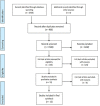Impact of Polypharmacy, Drug-Related Problems, and Potentially Inappropriate Medications in Geriatric Patients and Its Implications for Bulgaria-Narrative Review and Meta-Analysis
- PMID: 35309221
- PMCID: PMC8927684
- DOI: 10.3389/fpubh.2022.743138
Impact of Polypharmacy, Drug-Related Problems, and Potentially Inappropriate Medications in Geriatric Patients and Its Implications for Bulgaria-Narrative Review and Meta-Analysis
Abstract
Objective: Polypharmacy and inappropriate prescribing are overlooked issues in Bulgaria. We aimed at collecting and analyzing global literature on the most prevalent risk factors and investigating what they could reveal about current practice.
Materials and methods: A systematic narrative review and meta-analysis was conducted on the topic, investigating the prevalence of polypharmacy, odds of potentially inappropriate medications (PIMs) due to polypharmacy, and the likelihood of developing a drug-related problem (DRP) due to PIMs. The results were then related to current demographic statistics to estimate the potential impact on Bulgarian elderly patients.
Results: The prevalence of polypharmacy was estimated at 41% in elderly populations. The odds of a potentially inappropriate medication being prescribed were 2.095, with an expected 30.84% of those leading to a DRP. These numbers indicated that the expected Bulgarian elderly with polypharmacy should be 709,676 with 212,903 cases of DRPs.
Conclusion: Global polypharmacy rates seem to be on the rise, with an expected increase in DRPs.
Keywords: Bulgaria; drug-related problems; elderly patients; inappropriate prescribing; meta-analysis; polypharmacy.
Copyright © 2022 Krustev, Milushewa and Tachkov.
Conflict of interest statement
The authors declare that the research was conducted in the absence of any commercial or financial relationships that could be construed as a potential conflict of interest.
Figures





References
-
- O'Dwyer M, Peklar J, McCallion P, McCarron M, Henman MC. Factors associated with polypharmacy and excessive polypharmacy in older people with intellectual disability differ from the general population: a cross-sectional observational nationwide study. BMJ Open. (2016) 6:e010505. 10.1136/bmjopen-2015-010505 - DOI - PMC - PubMed
-
- Varghese D, Koya HH. Polypharmacy. StatPearls: (2020). Available online at: https://www.ncbi.nlm.nih.gov/books/NBK532953/ (accessed November 24, 2020).
Publication types
MeSH terms
LinkOut - more resources
Full Text Sources

